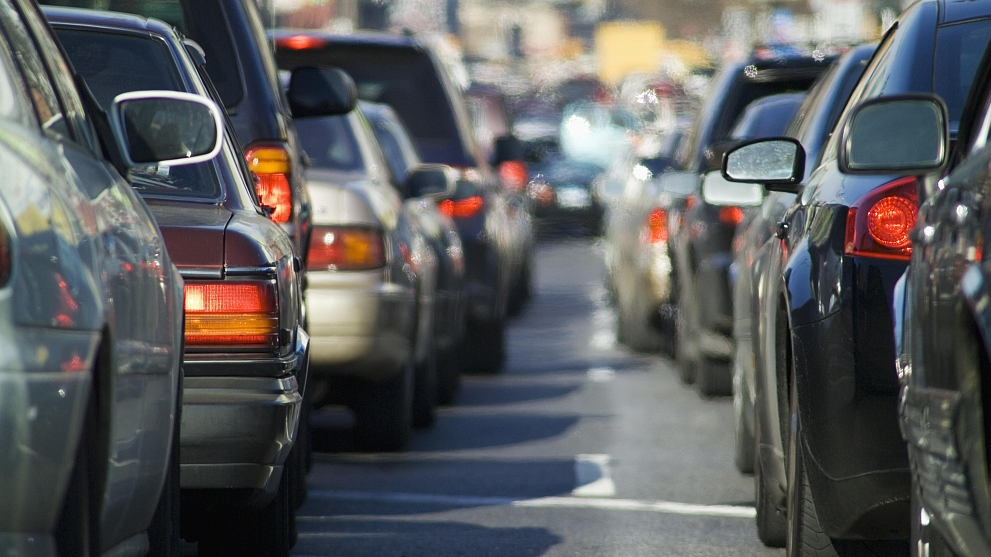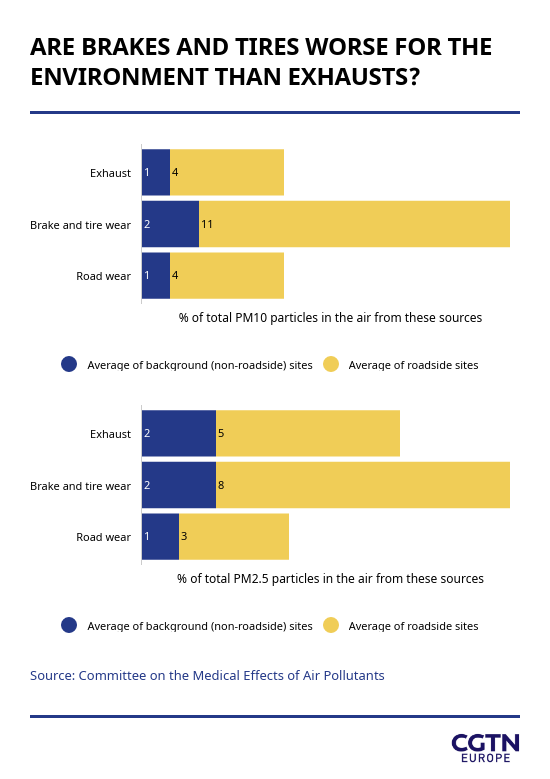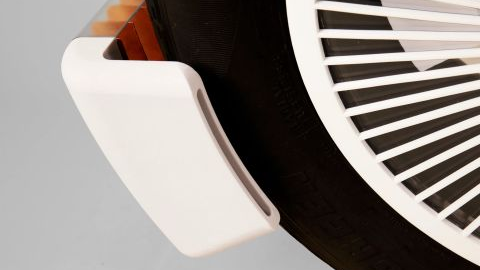
Brake and tire wear from road vehicles is responsible for more fine particle emissions than exhaust fumes. /VCG
Brake and tire wear from road vehicles is responsible for more fine particle emissions than exhaust fumes. /VCG
Brake and tire wear from road transport vehicles is responsible for more fine particle emissions than exhaust fumes.
That's according to a UK government report in association with the Committee on the Medical Effects of Air Pollutants on the evidence for health effects associated with exposure to non-exhaust particulate matter from road transport.
The report shows the contributions of exhaust, brake and tire wear, and road wear to the total amount of PM10 and PM2.5, two fine particle matters that contribute to air pollution.
Non-exhaust particle matter emissions comprise just under 10 percent of the UK's particle emissions (PM) – and that proportion is set to increase as electric vehicles, which have no exhausts, become more and more popular.
Several monitoring sites were used to carry out the research including two specific ones – London North Kensington and London Marylebone Road.
The sites were broken down between 30 "background sites" and 15 "roadside sites." An average reading was then taken to determine the mean from such areas.
The findings
The average taken from the 30 background sites shows exhausts accounted for one percent of the PM10 count and two percent of the PM2.5, while brake and tire wear, which were measured together, accounted for two percent of PM10 and PM2.5. One percent of PM10 and PM2.5 was attributed to road wear.
In London North Kensington, another background site, which was measured separately, exhaust pollution was measured at two percent of PM10 and four percent of PM2.5. Brake and tire wear was at six percent PM10 and five percent PM2.5. Road wear was at two percent for both PM10 and PM2.5.
While in the 15 roadside sites, exhausts accounted for four percent of the overall PM10 count and five percent of PM2.5. PM10 Brake and tire wear was measured at 11 percent and PM2.5 was measured at eight percent. Road wear was measured at at four percent in PM10 and four percent in PM2.5.
At roadside site London Marylebone Road exhaust PM10 levels measured at six percent and nine percent in PM2.5. Brake and tire wear levels were measured at 16 percent of PM10 and 13 percent of PM2.5. Road wear accounted for six percent of the PM10 levels and five percent of PM2.5.
According to the report, the average percentage results for the background sites are consistent with the modeled population-weighted mean background concentrations for the rest of the UK and can therefore be used as a nationwide representative.

Brake and tire wear accounts for 10 percent (PM2.5) and 13 percent (PM10) of the particles in the air from those sources. /CGTN
Brake and tire wear accounts for 10 percent (PM2.5) and 13 percent (PM10) of the particles in the air from those sources. /CGTN
Just how dangerous is particle pollution?
Both PM10 and PM2.5 particles carry adverse health effects if they get into the respiratory system, which can occur after exposure in both the short term and the long term.
Common health problems as a result of exposure include respiratory and cardiovascular morbidity, for example asthma, as well as death from cardiovascular and respiratory diseases as well as from lung cancer.
According to a report from the World Health Organization, PM2.5 particles carry a higher chance of death than PM10 particles.
In 2018, the WHO estimated that around 7 million people die every year from exposure to fine particles in polluted air.
In case you missed it:
• Should I worry about my name?
• Chip maker ARM's sale to Nvidia 'risks U.S. curbs on exports to China'
• Dublin museum dismantles whale skeleton after more than a century
How can it be better managed?
In the UK, there is currently very little legislation to control the composition of brakes and tires, but there is expected to be future guidance and regulation in the near future.
However, there may be an answer to help prevent the amount of PM10 and PM2.5 particles emitted by tire wear in the future.
This year's James Dyson Award was given the makers of a device that catches micro-plastic particles from tires as they are emitted.
It was designed by The Tyre Collective, a group of students from Imperial College London and the Royal College of Art and is fitted to the wheel of the vehicle and uses electrostatics to collect the particles. The device aims to reduce the amount of air pollution emitted by tire wear as well as brake wear.

This year's James Dyson Award was given to The Tyre Collective, which made a device that catches micro-plastic particles from tires. /James Dyson Awards/Tyre Collective
This year's James Dyson Award was given to The Tyre Collective, which made a device that catches micro-plastic particles from tires. /James Dyson Awards/Tyre Collective